- Home
- Prelims
- Mains
- Current Affairs
- Study Materials
- Test Series
 EDITORIALS & ARTICLES
EDITORIALS & ARTICLES
Hit List Questions 67-PPP 100 PRELIMS 2024 - 85
Questions & Explanations:
|
1. |
The ''Navtej Johar'' judgment is connected to (a) Sustainable Development rights (b) Gender rights (c) Homosexual rights (d) Reservation issues
|
|
2. |
The term “Lisus” in news refer to (a) Tribes (b) Coniferous trees (c) Alpine foxes (d) Elephants
|
|
3. |
W.r.t. ‘Thirty Meter Telescope’, consider the following: 1) It is being funded by scientific organisations of Canada, China, India, Japan and USA. 2) It is designed for near-ultraviolet to mid-infrared observations. Which of the statements given above is/are correct?. (a) 1 only (b) 2 only (c) Both 1 and 2 (d) Neither 1 nor 2
|
|
4. |
Which constitutional amendments require ratification by States? 1. If there is a change in the extent of the executive power of the Union or the State governments 2. If there is a change in the provisions regarding elections to the post of the President of India 3. If any of the Lists in the Seventh Schedule is affected. 4. If there is a change in para 21(2)13 of Schedule VI (a) 1 and 2 only (b) 2, 3 and 4 only (c) 1. 2 and 3 only (d) 1, 2, 3 and 4 only
|
|
5. |
Which of the following is/are true w.r.t. “Break bone fever”?. (a) It is caused by the bite of a mosquito. (b) It has a haemorrhagic tendency. (c) Both (a) and (b) (d) Neither (a) nor (b)
|
|
6. |
Which of the following statements regarding the Account Aggregator (AA) is/ are correct? 1. It is a type of RBI regulated entity. 2. It can read consumer data. 3. Only banks and NBFCs can become financial information providers (FIPs) under the framework. (a) 1 and 2 only (b) 1 only (c) 2 and 3 only (d) 1, 2 and 3
|
|
7. |
Who was chosen as the provisional president of the Constituent Assembly? (a) Dr Rajendra Prasad (b) Dr. Sachidanand Sinha (c) Jawaharlal Nehru (d) Alladi Krishnaswami Ayer
|
|
8. |
“India ranks first in facing the highest risk of misinformation and disinformation in the world” said ‘Global Risks Report 2024’ that was released by (a) World Bank (b) World Economic Forum (c) UNCTAD (d) World Trade Organisation
|
|
9. |
Article 324 of Indian Constitution mentions the following: 1. the Election Commission shall consist of the Chief Election Commissioner and such number of other election commissioners, if any, as the parliament may from time-to-time fix. 2. The Chief Election Commissioner and other election commissioners have equal powers and receive equal salaries, allowances similar to that of a judge of the Supreme Court. 3. Election Commission has the power to direct, control, and conduct elections to all Parliament, to the Legislature of every state and of elections to the offices of the President and Vice President held under the Constitution. Select the correct answer using the code given below. (a) 2 and 3 only (b) 1, 2 and 3 (c) 1 and 3 only (d) 1 only
|
|
10. |
Consider the following statements about “The First Movers Coalition” seen in news: 1. It is launched by World Economic Forum. 2. Its objective is to reduce poverty. Which of the above statements is/are correct?. (a) Only 1 (b) 1 & 2 (c) Only 2 (d) Neither 1 Nor 2
|
|
11. |
Consider the following statements w.r.t. Government of India Act of 1919: 1. It granted universal adult franchise for the first time. 2. It separated provincial budgets from the Central budget and authorized the provincial legislatures to enact their budgets. Which of the statements given above is/are incorrect?. (a) 1 only (b) 2 only (c) Both 1 and 2 (d) Neither 1 nor 2
|
|
12. |
Consider the following statements: 1. If there is a constraint from the supply side in an economy, then demand-pull inflation is seen. 2. Due to increase in indirect taxes in an economy, cost push inflation can be seen. (a) Only 1 is true (b) Only 2 is true (c) Both 1 and 2 are true (d) Neither 1 nor 2 is true
|
|
13. |
Consider the following: 1. to fumigate agricultural products 2. to produce plastic bottles 3. to produce engine antifreeze 4. to make polyester The uses of Ethylene Oxide include (a) 1, 2, 4 (b) 1, 2, 3, 4 (c) 2, 4 (d) 2, 3
|
|
14. |
India’s call for a two-state solution is to permanently resolve (a) Tamil Elam issue in Srilanka (b) Issue of Uighurs in China (c) Israel – Palestine conflict (d) Gilgit-Baltistan conflict
|
|
15. |
The Chief Information Commissioner and the Information Commissioners are appointed by the President on the recommendation of a committee consisting of (a) Prime Minister, Leader of Opposition in the Lok Sabha and Speaker of Lok Sabha (b) Prime Minister and Leader of Opposition in the Lok Sabha (c) Prime Minister, Leader of Opposition in the Lok Sabha and Chief Justice of India (d) Prime Minister, Leader of Opposition in the Lok Sabha and a Union Cabinet Minister nominated by the Prime Minister
|
|
16. |
The strength of judges in the Supreme Court and High court can be respectively increased by (a) Parliament in both the courts (b) Parliament and President (c) President and Governor (d) President in both the courts
|
|
17. |
Tight Monetary policy involves 1. increase in savings 2. selling of long-dated government bonds by the RBI 3. depreciation of the exchange rate Which of the statements given above is/are correct? (a) 1 and 3 only (b) 1 and 2 only (c) 2 and 3 only (d) 1, 2 and 3
|
|
18. |
When a central bank buys long-term securities from its member banks it is known as (a) Quantitative easing (b) Tapering (c) Closed market operations (d) Monetary suasion |
|
19. |
Which of the following is defined by supply-side factors, such as higher wages and higher oil prices?. (a) Cost-Push Inflation (b) Cost-Pull Inflation (c) Demand Pull Inflation (d) Hyper demand inflation
|
|
20. |
Which of the following statements is/are correct w.r.t. ''Bose-Einstein Condensate''?. 1. It is a phenomenon of Classical physics. 2. It exists when atoms of certain elements are cooled to temperatures near absolute zero. 3. Year 2001’s Nobel Prize in Physics dealt with the Bose-Einstein Condensate. (a) 1 and 2 only (b) 1 and 3 only (c) 2 and 3 only (d) 1, 2 and 3
|
|
21. |
Which of these is/are true?. 1. Appropriation bill covers both the grants voted by the Lok Sabha and the expenditure charged on the Consolidated Fund of India. 2. Vote on Account is passed after the general discussion on budget is over. (a) 1 & 2 (b) Only 1 (c) Only 2 (d) Neither 1 nor 2
|
|
22. |
1. It is a parliamentary convention. 2. It secures the unity of the Cabinet and the Council of Ministers. Which of the statements given above is/are incorrect w.r.t. to the principle of ''collective responsibility'' in India?. (a) 1 only (b) 2 only (c) Both 1 and 2 (d) Neither 1 nor 2
|
|
23. |
1. Russia 2. Kazakhstan 3. Armenia 4. Uzbekistan 5. Azerbaijan Which of these countries are members of the Collective Security Treaty Organisation? (a) 1, 2, 3 (b) 1, 2, 4, 5 (c) 1, 2, 5 (d) 1, 2, 3, 4
|
|
24. |
1. It is chaired by Chief Economic Advisor. 2. It will meet at least twice a year to support Ministry of Finance with selection and evaluation of projects. Which of the above statements is/are correct regarding the Green Finance Working Committee? (a) 1 only (b) 2 only (c) Both 1 and 2 (d) Neither 1 nor 2
|
|
25. |
1. The proceeds from the this will be deposited to the Consolidated Fund of India in line with the regular treasury policy. 2. It is a debt security. 3. The World Bank issued the first labeled green bond. Which of the above given statements is/are correct w.r.t. Sovereign green bond?. (a) 1 and 2 only (b) 1 and 3 only (c) 2 and 3 only (d) 1, 2 and 3
|
EXPLANATIONS
|
1. |
· Navtej Singh Johar vs Union of India case led to a landmark decision by the Supreme Court of India in 2018 that decriminalised all consensual sex among adults in private, including homosexual sex. · The Supreme Court of India determined constitutionality of Section 377 of the Indian Penal Code, a colonial-era law which, among other things, criminalised homosexual acts as an “unnatural offence”. · On 6 September 2018, the court unanimously declared the law unconstitutional “in so far as it criminalises consensual sexual conduct between adults of the same sex”. · The court found that the criminalisation of sexual acts between consenting adults violated the right to equality guaranteed by the Constitution of India. · The judgement also made note that LGBT community is entitled to equal citizenship and protection under law, without discrimination. The verdict was hailed as a landmark decision for LGBT rights in India. Portions of Section 377 relating to sex with minors, non-consensual sexual acts such as rape, and bestiality remain in force. |
C |
|
2. |
Lisu tribe, also called ''Yobin'' in India, live in the most eastern corner of the country in Shidi Valley and Nibodi village of Arunachal Pradesh, surrounded by Namdapha National Park, considered as ''encroachers'' in the forests under the Wildlife Protection Act, 1972. Earlier, the tribe used to live in neighbouring countries such as Myanmar and China. Now, many describe the tribe residing there as prisoners of geography. The Lisu tribe resides in Shidi Valley, officially known as Gandhiram village, one of the largest Lisu villages. The tribe is speculated to have originated from the Yunnan region in North-Western Tibet in the 18th century and were traditionally slash and burn farmer communities. It is believed that in the 19th century, they started going towards the south and reached what is now China, India, Myanmar, Laos, and Thailand. They have the largest population in South-West China. https://www.thehindu.com/news/national/where-names-carry-numbers/article67959498.ece |
A |
|
3. |
C |
|
|
4. |
C |
|
|
5. |
Dengue fever is also known as break bone Fever. |
C |
|
6. |
https://www.thehindubusinessline.com/portfolio/personal-finance/fintech-tools-benefits-of-using-account-aggregators/article67591004.ece https://www.thehindu.com/business/Economy/explained-what-is-the-new-framework-to-share-financial-data/article36409053.ece |
B |
|
7. |
|
B |
|
8. |
B |
|
|
9. |
https://www.business-standard.com/about/what-is-election-commission-of-india#collapse |
A |
|
10. |
A |
|
|
11. |
It granted franchise to a limited number of people on the basis of property, tax or education. Montague-Chelmsford Reforms or the Government of India act, 1919 · In line with the government policy contained in Montagu’s statement (August 1917), the Government announced further constitutional reforms in July 1918, known as Montagu- Chelmsford or Montford Reforms. · The Montagu–Chelmsford Reforms were reforms introduced by the British Government in India to introduce self-governing institutions gradually to India. The reforms take their name from Edwin Samuel Montagu, the Secretary of State for India during the latter parts of World War I and Lord Chelmsford, Viceroy of India between 1916 and 1921. · The reforms were outlined in the Montagu-Chelmsford Report prepared in 1918 and formed the basis of the Government of India Act 1919. The main features of the Montford Reforms (1) Provincial Government—Introduction of Dyarchy: (a) Executive: 1. Dyarchy, i.e., rule of two—executive councillors and popular ministers—was introduced. The governor was to be the executive head in the province. 2. Subjects were divided into two lists: “reserved” which included subjects such as law and order, finance, land revenue, irrigation, etc., and “transferred” subjects such as education, health, local government, industry, agriculture, excise, etc. 3. The “reserved” subjects were to be administered by the governor through his executive council of bureaucrats, and the “transferred” subjects were to be administered by ministers nominated from among the elected members of the legislative council. 4. The ministers were to be responsible to the legislature and had to resign if a no-confidence motion was passed against them by the legislature, while the executive councilors were not to be responsible to the legislature. 5. In case of failure of constitutional machinery in the province the governor could take over the administration of “transferred” subjects also. 6. The secretary of state and the governor-general could interfere in respect of “reserved” subjects while in respect of the “transferred” subjects; the scope for their interference was restricted. (b) Legislature: 1. Provincial Legislative Councils were further expanded—70% of the members were to be elected. 2. The system of communal and class electorates was further consolidated. 3. Women were also given the right to vote. 4. The Legislative Councils could initiate legislation but the governor’s assent was required. The governor could veto bills and issue ordinances. 5. The Legislative Councils could reject the budget but the governor could restore it, if necessary. 6. The legislators enjoyed freedom of speech. (2) Central Government—Still Without Responsible Government: (a) Executive: 1. The governor-general was to be the chief executive authority. 2. There were to be two lists for administration– central and provincial. 3. In the viceroy’s executive council of 8, three were to be Indians. 4. The governor-general retained full control over the “reserved” subjects in the provinces. 5. The governor-general could restore cuts in grants, certify bills rejected by the Central Legislature,summon, prorogue, dissolve the Chambers, and issue ordinances. (b) Legislature: 1. A bicameral arrangement was introduced. The lower house or Central Legislative Assembly would consist of 144 members (41 nominated and 103 elected—52 General, 30 Muslims, 2 Sikhs, 20 Special) and the upper house or Council of State would have 60 members (26 nominated and 34 elected—20 General, 10 Muslims, 3 Europeans and 1 Sikh). 2. The Council of State had tenure of 5 years and had only male members, while the Central Legislative Assembly had tenure of 3 years. 3. The legislators could ask questions and supplementaries pass adjournment motions and vote a part of the budget, but 75% of the budget was still not votable. 4. Some Indians found their way into important committees including finance.
(3) Review: · The Montagu-Chelmsford report stated that there should be a review after 10 years. · Sir John Simon headed the committee (Simon Commission) responsible for the review which recommended further constitutional change. · Three round table conferences were held in London in 1930, 1931 and 1932 with representation of the major interests. Gandhi attended the 1931 round table after negotiations with the British Government. The major disagreement between Congress and the British was separate electorates for each community which Congress opposed but which were retained in Ramsay MacDonald’s Communal Award. · A new Government of India Act 1935 was passed continuing the move towards self-government first made in the Montagu-Chelmsford Report. Drawbacks · Franchise was very limited. · At the centre, the legislature had no control over the governor-general and his executive council. · Division of subjects was not satisfactory at the centre. · Allocation of seats for Central Legislature to provinces was based on ‘importance’ of provinces for instance, Punjab’s military importance and Bombay’s commercial importance. · At the level of provinces, division of subjects and parallel administration of two parts i.e. Dyarchy was irrational and hence unworkable. · The provincial ministers had no control over finances and over the bureaucrats, leading to constant friction between the two. Ministers were often not consulted on important matters too; in fact, they could be overruled by the governor on any matter that the latter considered special. · On the home government (in Britain) front, the Government of India Act, 1919 made an important change the secretary of state was henceforth to be paid out of the British exchequer. · While, on the one hand, the Government dangled the carrot of constitutional reforms, on the other hand, it decided to arm itself with extraordinary powers to suppress any discordant voices against the reforms. In March 1919, it passed the Rowlatt Act even though every single Indian member of the Central Legislative Council opposed it. This Act authorised the Government to imprison any person without trial and conviction in a court of law, thus enabling the Government to suspend the right of habeas corpus which had been the foundation of civil liberties in Britain. Reception in India · The Congress met in a special session in August 1918 at Bombay under Hasan Imam’s presidency and declared the reforms to be “disappointing” and “unsatisfactory” and demanded effective self-government instead. · The 1919 reforms did not satisfy political demands in India. The British repressed opposition, and restrictions on the press and on movement were re-enacted in the Rowlatt Acts introduced in 1919. These measures were rammed through the Legislative Council with the unanimous opposition of the Indian members. Several members of the council including Jinnah resigned in protest. These measures were widely seen throughout India of the betrayal of strong support given by the population for the British war effort. · Gandhi launched a nationwide protest against the Rowlatt Acts with the strongest level of protest in the Punjab. An apparently unwitting example of violation of rules against the gathering of people led to the massacre at Jalianwala Bagh in Amritsar in April 1919. This tragedy galvanised such political leaders as Nehru and Gandhi and the masses who followed them to press for further action.Montagu ordered an inquiry into the events at Amritsar by Lord Hunter. The Hunter Inquiry recommended that General Dyer, who commanded the troops, be dismissed, leading to Dyer’s sacking. Many British citizens supported Dyer, whom they considered had not received fair treatment from the Hunter Inquiry.
|
A |
|
12. |
Increasing reliance on indirect taxes has increased the real income of the public due to which with the same price of the goods and services in the economy, they are able to buy more. Therefore, the purchasing power of the public has increased which increases the aggregate demand in the economy and leads to increase in inflation owing to excess demand in the economy. |
B |
|
13. |
It is most commonly used in the production of other chemicals and products, including solvents, antifreeze, detergents, adhesives, polyurethane foams and pharmaceuticals. It is also found in tobacco smoke. is used in the manufacture of anti-freeze, polyester and PET. PET (polyethylene terephthalate) is a type of resin and a form of polyester; it is commonly labelled with the code on or near the bottom of bottles and other containers. PET has some important characteristics such its strength, thermo-stability, gas barrier properties and transparency. An important use of it is the sterilization of medical equipment, including personal protective equipment used by health care professionals and hospitals. It is estimated that ethylene oxide sterilizes 20 billion medical devices each year, helping to prevent disease and infection. |
B |
|
14. |
The two-state solution to the Israeli–Palestinian conflict proposes to resolve the conflict by establishing two nation states in former Mandatory Palestine. The implementation of a two-state solution would involve the establishment of an independent State of Palestine alongside the State of Israel. |
C |
|
15. |
· The Chief Information Commission was established by the Central Government in 2005, under the provisions of the Right to Information Act (2005). It is not a constitutional body. · It consists of a Chief Information Commissioner and not more than ten Information Commissioners. · They are appointed by the President on the recommendation of a committee consisting of the Prime Minister as Chairperson, the Leader of Opposition in the Lok Sabha and a Union Cabinet Minister nominated by the Prime Minister. · The jurisdiction of the Commission extends over all Central Public Authorities. · The Chief Information Commissioner and an Information Commissioner shall hold office for such term as prescribed by the Central Government or until they attain the age of 65 years, whichever is earlier. · They are not eligible for reappointment. |
D |
|
16. |
Originally, the strength of the Supreme Court was fixed at eight (one chief justice and seven other judges). The Parliament has increased this number of other judges progressively to ten in 1956, to thirteen in 1960, and seventeen in 1977, twenty-five in 1986, thirty in 2008, and thirty-three in 2019. · At present, the Supreme Court consists of thirty-four judges (one chief justice and thirty-three other judges). In 2019, the center notified an increase in the number of Supreme Court judges from thirty-one to thirty-four, including the Chief Justice of India. This followed the enactment of the Supreme Court (Number of Judges) Amendment Act, 2019. · Every high court (whether exclusive or common) consists of a chief justice and such other judges as the president may, from time to time, deem necessary to appoint. Thus, the Constitution does not specify the strength of a high court and leaves it to the discretion of the president. Accordingly, the President determines the strength of a high court from time to time depending on its workload. |
B |
|
17. |
Tight Monetary policy involves Raising Interest Rates · Higher interest rates tend to reduce aggregate demand (AD) because: Borrowing becomes more expensive. Therefore firms and consumers are discouraged from investing and spending. · Saving becomes more attractive. Therefore firms and consumers are more likely to keep saving money in the bank rather than spend. · Reduced disposable income. Consumers with a variable mortgage will see a rise in monthly mortgage interest payments(as lending rates will increase). Therefore, they will have less income to spend. · Exchange rate effect. By raising interest rates, the exchange rate tends to appreciate because of hot money flows taking advantage of better saving rates in that country. An appreciation of the exchange rate will also help reduce inflationary pressure. Imports will be cheaper. Also, there will be less demand for exports, leading to a decline in aggregate demand The decline in competitiveness may encourage firms to be more efficient and cut cost. Open Market Operations · The Central bank can also tighten monetary policy by restricting the supply of money. To do this, they can print less money or sell long-dated government bonds to the banking sector. By selling bonds, banks see a reduction in liquidity and therefore reduce lending. A central bank could also raise the minimum reserve ratio. This forces banks to keep more liquidity in banks. |
B |
|
18. |
Tapering is the incremental reversal of a central bank''s quantitative easing strategy designed to boost economic growth. Tapering is when a central bank reduces asset purchases when the economy has recovered sufficiently to no longer need a stimulus. |
A |
|
19. |
Cost Push and Demand-Pull Inflation · Demand-pull inflation is caused when the need for services and goods exceeds the available supply. This can happen when economic growth leads to an increase in consumer spending. It can also happen when the government increases its spending or if there is a boost in exports. When demand exceeds supply, prices go up. · Cost-push inflation happens when the cost of goods and services goes up. This can be caused by a hike in the price of raw materials, or by a rise in wages. When the cost of goods and services goes up, businesses pass these costs on to consumers in the form of higher prices. · So basically, demand-pull inflation happens when a request for services and goods exceeds the available supply. Cost-push inflation happens when the cost of goods and services goes up. Both Cost-Push and Demand-Pull Inflation can lead to higher prices. · Demand-pull inflation is caused by excess demand, while cost-push inflation is caused by excess costs. · Demand-pull inflation tends to be more short-term, while cost-push inflation can be more long-term. Demand-pull inflation is usually caused by strong economic growth, while cost-push inflation is usually caused by an increase in costs. |
A |
|
20. |
It is a quantum phenomenon. It can be used in creation of atomic lasers and atomic clocks. |
C |
|
21. |
An appropriation bill is introduced to provide for the appropriation, out of the Consolidated Fund of India, all money required to meet both the grants voted by the Lok Sabha and the expenditure charged on the Consolidated Fund of India. The Constitution has authorized the Lok Sabha to make any grant in advance in respect to the estimated expenditure for a part of the financial year, pending the completion of the voting of the demands for grants and the enactment of the appropriation bill. This provision is known as the ‘vote on account’. It is passed (or granted) after the general discussion on budget is over. It is generally granted for two months for an amount equivalent to one sixth of the total estimation.
|
A |
|
22. |
It is a constitutional precept in Parliamentary systems that members of the cabinet must show their support publicly over all governmental decisions made in Cabinet. The collective responsibility under Article 75 of the Constitution of India has two meanings: (I) All members of a Government are unanimous in support of its policies, (II) The ministers, who had an opportunity to speak for or against the policies in the cabinet are thereby personally and morally responsible for its success and failure. Collective cabinet responsibility refers to the accepted conduct of Government Ministers as part of the cabinet. Under this doctrine, ministers are bound to support publicly the decisions made by the Cabinet as a whole and will show no disagreement with these decisions outside the cabinet room. The doctrine has evolved as a means of maintaining the appearance of cabinet unity and party discipline and showing that the government is firmly behind the policies it promotes and seeks to pass through the parliament. The doctrine of Collective Cabinet Responsibility evolved as a means of giving a public appearance of cabinet unity and genuine collective decision making. In case of a no-confidence motion is passed in parliament, the government along with the entire cabinet is responsible collectively. Thus, the entire government has to resign. As a consequence, the parliament will be dissolved and a general election will be called for the election of a new government. |
A |
|
23. |
· CSTO is an intergovernmental military alliance that was signed on 15 May 1992. · In 1992, six post-Soviet states belonging to the Commonwealth of Independent States signed the Collective Security Treaty (also referred to as the “Tashkent Pact” or “Tashkent Treaty”). · Its 6 members are: Armenia, Belarus, Kazakhstan, Kyrgyzstan, Russia and Tajikistan. · Headquarters: Moscow, Russia. · The objectives of the CSTO is to strengthen peace, international and regional security including cyber security and stability, the protection on a collective basis of the independence, territorial integrity and sovereignty of the member states. · Uzbekistan had quit the alliance in 2012. |
A |
|
24. |
SOVEREIGN GREEN BONDS
What are Green Bonds?
Example of Green Bonds:
India’s Sovereign Green Bonds Framework:
Features of the SGrBs:
Eligible Projects:
Where will the proceeds go?
Implementing Agency:
|
C |
|
25. |
D |









 Latest News
Latest News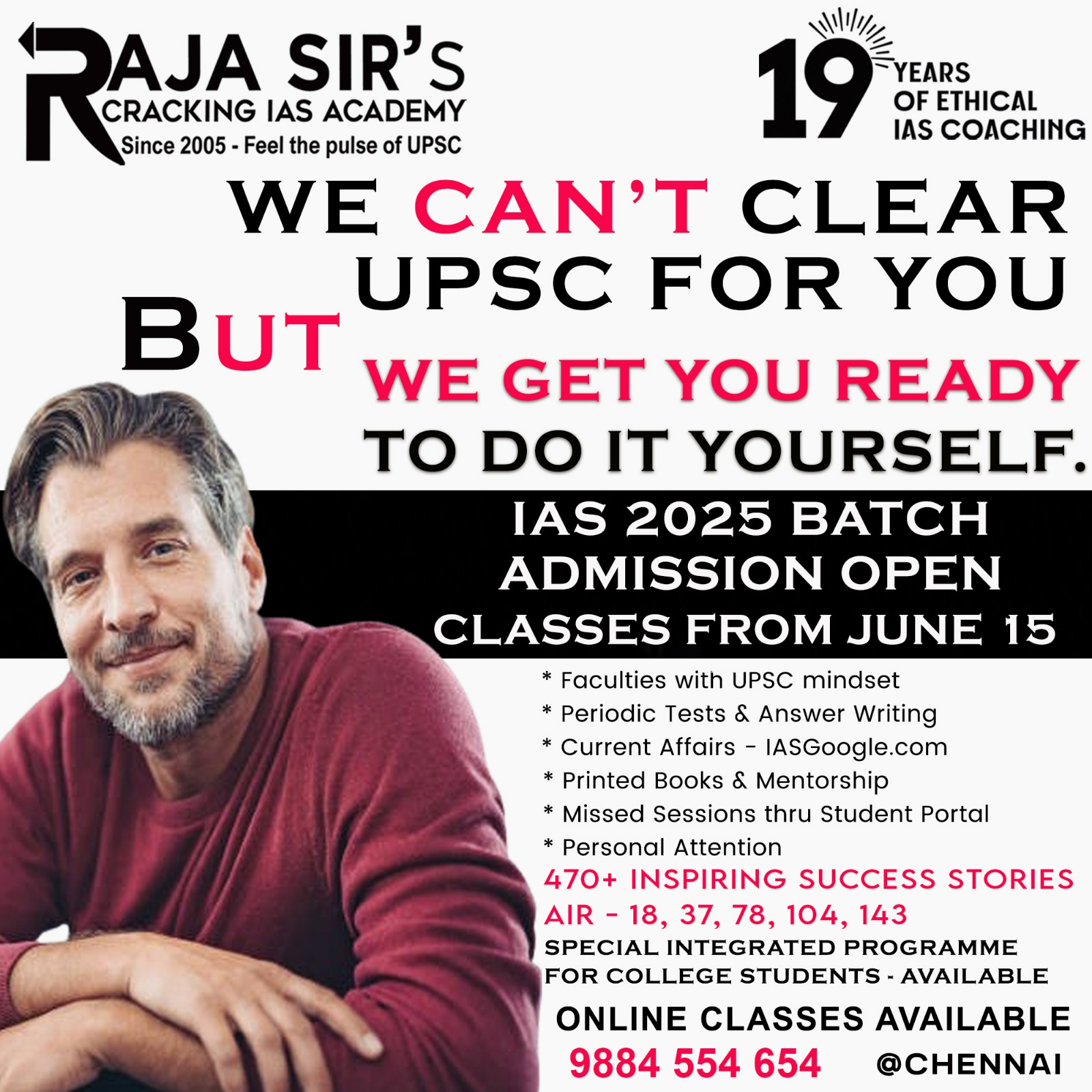
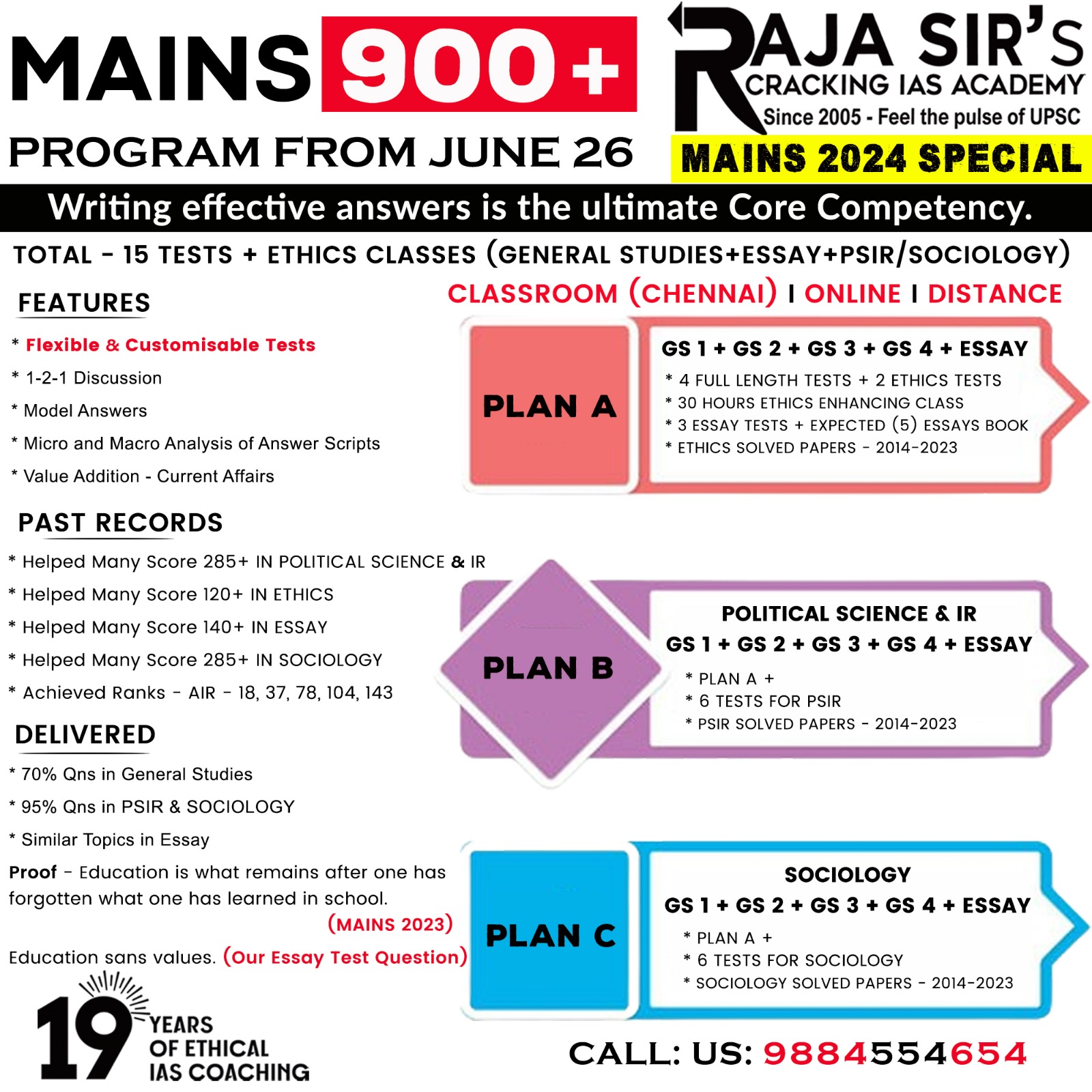
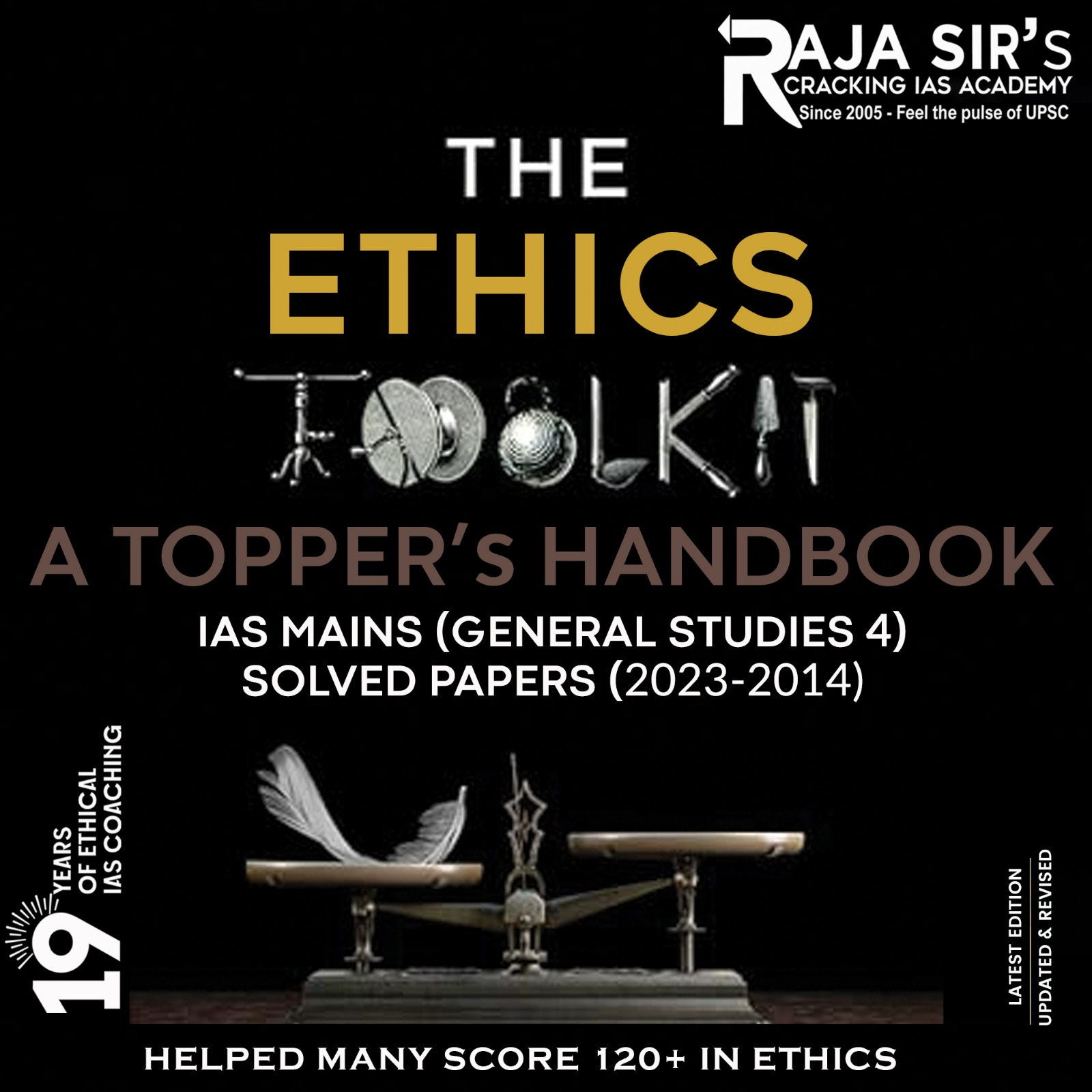
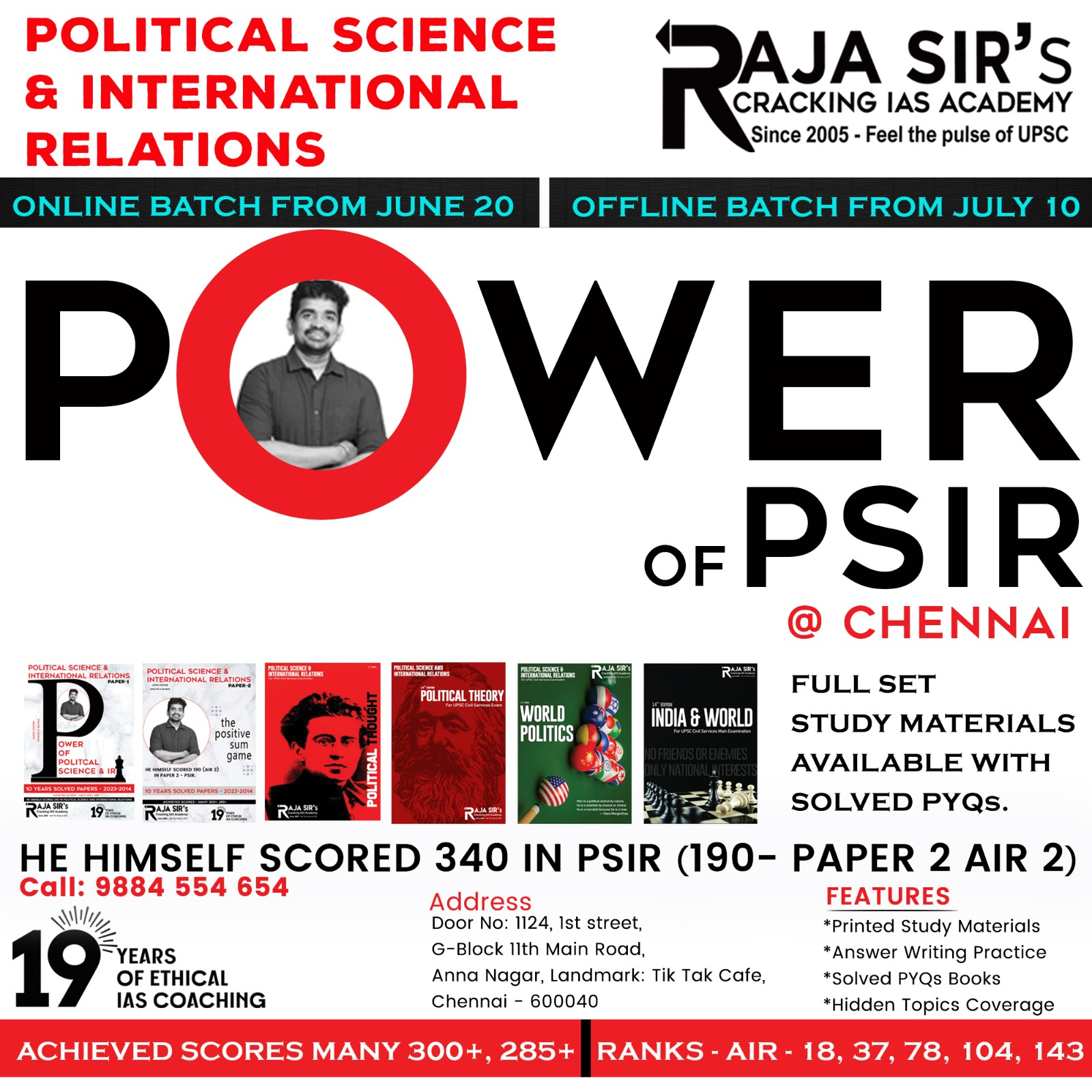
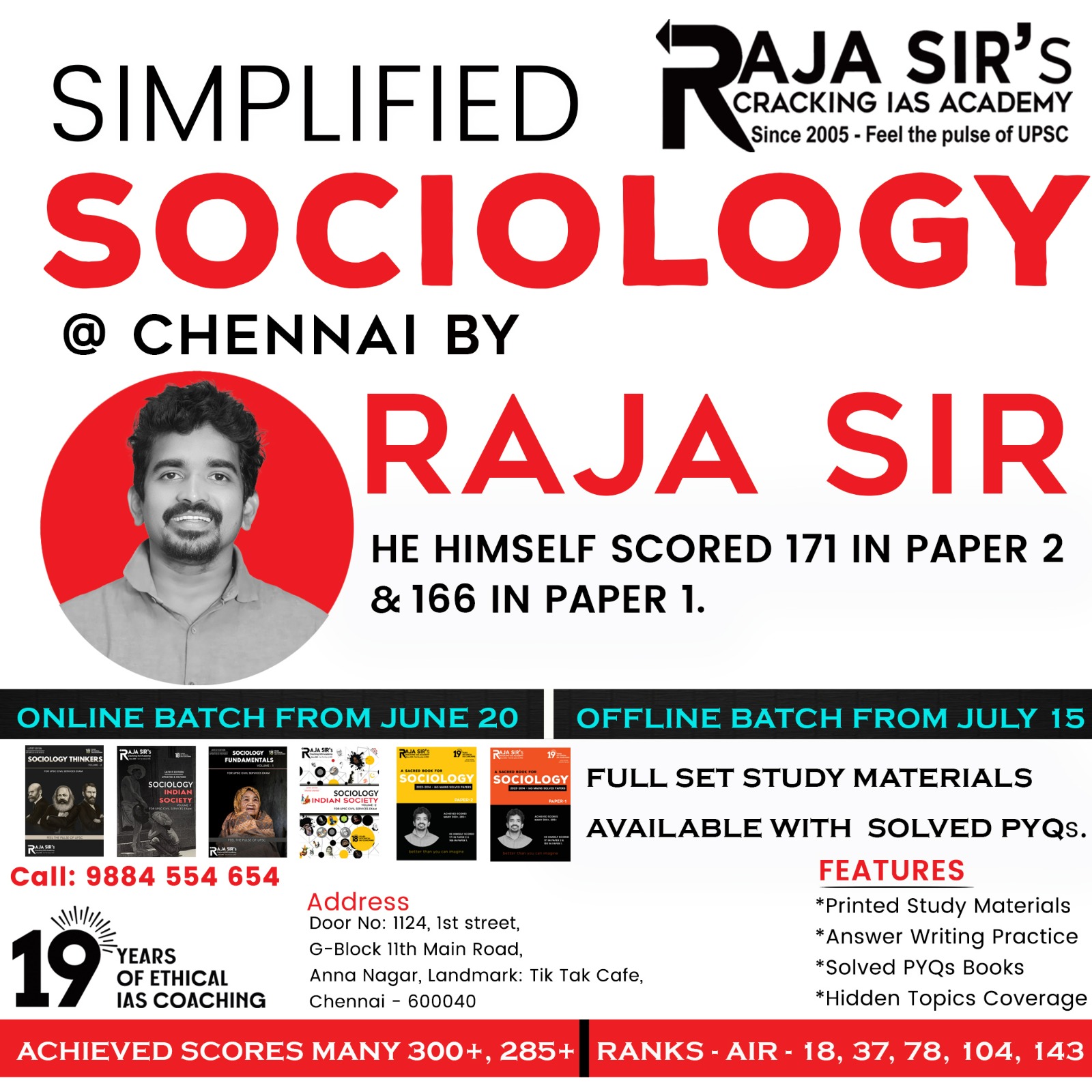
 General Studies
General Studies